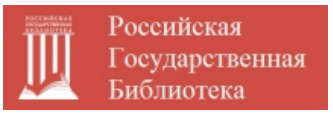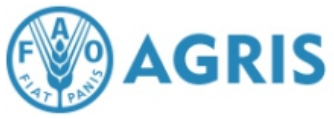Fungal diseases of wheat in Russia: spread, symptoms, control methods and economic damage – a review
F. Duksi, M.H. Walli, M. Zargar
Upload the full text
Abstract: Wheat (Triticum aestivum L.) is a primary crop in Russia. Fungal diseases, such as rust diseases, Septoria leaf blotch, Fusarium head blight, and powdery mildew, significantly reduce grain yield and quality annually. Pathogens can destroy up to 70 % of the harvest, negatively impacting exports and food security. Increasing fungal resistance to fungicides and climate change necessitate new data on diseases and adapted control measures. Research in this field is critical for developing resistant cultivars, improving agrotechnologies, and reducing dependence on chemicals. Aim. The purpose of the study is to review the main wheat diseases in Russia and their potential impact on the economy and food security, as well as to emphasize the importance of controlling and preventing these diseases through proper crop rotation, resistant varieties and the timely application of effective fungicides to ensure a sustainable and productive agricultural sector. The article focuses on rust, septoria, fusarium, and powdery mildew. Results. Indicate that fungal diseases are widespread in southern Russia, including Krasnodar Krai, Rostov Oblast, the North Caucasus, the Volga Region, and Western Siberia. Combined methods, such as using resistant cultivars and crop rotation, help reduce pathogen levels and monitor disease spread. This study may aid in protecting wheat crops and mitigating economic risks in Russia’s agricultural sector.
Keywords: wheat, phytopathogen, fusarium, yellow rust of cereals, septoria leaf spot, fungus
For citation. Duksi F., Walli M.H., Zargar M. Fungal diseases of wheat in Russia: spread, symptoms, control methods and economic damage – a review. News of the Kabardino-Balkarian Scientific Center of RAS. 2025. Vol. 27. No. 3. Pp. 121–132. DOI: 10.35330/1991-6639-2025-27-3-121-132
References
- Liefert W.M., Liefert O. Russian agriculture during transition: performance, global impact, and outlook. Applied Economic Perspectives and Policy. 2012. Vol. 34. No. 1. Pp. 37–75. DOI: 10.1093/AEPP/PPR046
- Gannibal F.B., Gagkaeva T.Yu., Gomzhina M.M. et al. Wheat-associated micromycetes and their significance as disease-causing agents in Russia. Plant Protection News. 2022. Vol. 105. No. 4. Pp. 164–180. DOI: 10.31993/2308-6459-2022-105-4-15508. (In Russian)
- Gagkaeva T., Gavrilova O., Orina A. et al. Analysis of toxigenic fusarium species associated with wheat grain from three regions of Russia: Volga, Ural, and West Siberia. Toxins. 2019. Vol. 11. No. 5. P. 252. DOI: 10.3390/toxins11050252
- Hovmøller M.S., Walter S., Justesen A.F. Escalating threat of wheat rusts. Science. 2010. Vol. 329. No. 5990. P. 369. DOI: 10.1126/science.1194925
- Volkova G.V., Kudinova O.A., Miroshnichenko O.O. Spread of stem rust in the North Caucasus and immunological characteristic of some winter wheat varieties with respect to the pathogen. Achievements of Science and Technology in Agro-Industrial Complex. 2018. Vol. 32. No. 11. Pp. 43–45. DOI: 10.24411/0235-2451-2018-11111. (In Russian)
- Oliver R.P. Fungicide resistance in wheat pathogens. Pest Management Science. 2014. Vol. 70. No. 2. Pp. 143–148.
- McIntosh R.A., Wellings R.F., Park R.F. Wheat rust resistance genes. Theoretical and Applied Genetics. 2018. Vol. 131. No. 5. Pp. 1073–1101. DOI: 10.1071/9780643101463
- Gultyaeva E.I., Shaydayuk E.L., Kazartsev I.A., Kosman E. Race characterization and molecular genotyping of Puccinia triticina populations from durum wheat in Russia. Plant Disease. 2021. Vol. 70. No. 4. Pp. 789–800. DOI: 10.1094/PDIS-09-20-1927-RE
- Agapova V.D., Vaganova O.F., Volkova G.V. The efficiency of juvenile genes of orange leaf rust resistance of winter wheat during the germinal phase in the climate of the Russian South. International Research Journal. 2020. No. 8-1(98). Pp. 163–168. DOI: 10.23670/IRJ.2020.98.8.023. (In Russian)
- Singh R., Mahmoudpour A., Rajkumar M., Narayana R. A review on stripe rust of wheat, its spread, identification and management at field level. Research on Crops. 2017. Vol. 18. No. 3. Pp. 528–533. DOI: 10.5958/2348-7542.2017.00091.2
- Zeng Q., Zhao J., Wu J. et al. Wheat stripe rust and integration of sustainable control strategies in China. Frontiers of Agricultural Science and Engineering. 2022. Vol. 9. No. 1. Pp. 37–51. DOI: 10.15302/j-fase-2021405
- Wellings C.R. Global Status of Stripe Rust. CAB Reviews. 2011. Vol. 6. No. 29. Pp. 1–13.
- Singh J., Chhabra B., Raza A. et al. Important wheat diseases in the US and their management in the XXIst century. Frontiers in Plant Science. 2023. Vol. 13. Pp. 72–86.
- Kononenko O.S., Shishkin N.V., Derova T.G. Winter wheat septoria blotch (Zymoseptoria Tritici) (literature review). Grain Economy of Russia. 2021. No. 6. Pp. 104–108. DOI: 10.31367/2079-8725-2021-78-6-104-108. (In Russian)
- Pakholkova E.V., Salnikova N.N. The frequency of potentially dangerous races of zimoseptoria tritici on wheat in the regional populations. Agrarian Science. 2019. No. S1. Pp. 99–103. DOI: 10.32634/0869-8155-2019-326-1-99-103. (In Russian)
- Svarta A., Bimsteine G. Winter wheat leaf diseases and several steps included in their integrated control: A review. Research for Rural Development. 2019. Vol. 25. No. 2. Pp. 55–62. DOI: 10.22616/rrd.25.2019.049.
- Downie R.C., Lin M., Corsi B., Ficke A., Lillemo M., Oliver R.P., Phan T.T., Tan K.H, Cockram J. Septoria nodorum blotch of wheat: disease management and resistance breeding in the face of shifting disease dynamics and a changing environment. Phytopathology. 2021. Vol. 111. No. 6. Pp. 906–920. DOI: 10.1094/PHYTO-07-20-0280-RVW
- Zeleneva Yu.V., Afanasenko O.S., Sudnikova V.P. Influence of agroclimatic conditions, life form and host species on the species complex of wheat septoria pathogens. Povolzhskiy Journal of Ecology. 2020. No. 2. Pp. 177–190. DOI: 10.35885/1684-7318-2020-2-177-190. (In Russian)
- Kiseleva M.I., Ovsyankina A.V., Kolomiets T.M. et al. Some aspects of the distribution of Fusarium on cereals of Russia. Acta Phytopathologica et Entomologica Hungarica. 2016. Vol. 51. No. 2. Pp. 183–191. DOI: 10.1556/038.51.2016.2.3
- Xu X.M., Nicholson P., Thomsett M.A. et al. Relationship between the fungal complex causing Fusarium head blight of wheat and environmental conditions. Phytopathology. 2008. Vol. 98. No. 1. Pp. 69–78. DOI: 10.1094/PHYTO-98-1-0069
- Dill-Macky R., Jones R.K. The effect of previous crop residues and tillage on Fusarium head blight of wheat. Plant Disease. 2000. Vol. 84. No. 1. Pp. 71–76. DOI: 10.1094/PDIS.2000.84.1.71
- Windels C.E. Economic and social impacts of Fusarium head blight: changing farms and rural communities in the Northern Great Plains. Phytopathology. 2000. Vol. 90. No. 1. Pp. 17–21. DOI: 10.1094/PHYTO.2000.90.1.17
- Zhang L., Yang B. Y., Li S., Guo A.H. Disease–weather relationships for wheat powdery mildew under climate change in China. The Journal of Agricultural Science. 2017. Vol. 155. No. 8. Pp. 1239–1252. DOI: 10.1017/S0021859617000442
- Lebedeva T.V., Zuev E.V., Brykova A.N. Prospects of employing modern european cultivars of spring bread wheat in the breeding for powdery mildew resistance in the northwestern region of Russia. Proceedings on Applied Botany, Genetics and Breeding. 2019. Vol. 180. No. 4. Pp. 170–176. DOI: 10.30901/2227-8834-2019-4-170-176. (In Russian)
Information about the authors
Fatima Duksi, Graduate student, Faculty of Agriculture, Peoples’ Friendship University of Russia
named after Patrice Lumumba;
117198, Russia, Moscow, 6 Miklukho-Maklaya street;
duxi.rudn@bk.ru, ORCID: https://orcid.org/0000-0002-7353-7816
Malek H. Walli, Graduate student, Faculty of Agriculture, Peoples’ Friendship University of Russia
named after Patrice Lumumba;
117198, Russia, Moscow, 6 Miklukho-Maklaya street;
ORCID: https://orcid.org/0000-0002-4884-6481
Meisam Zargar, Doctor of Agricultural Sciences, Professor of the Agrarian Faculty, Peoples’
Friendship University of Russia named after Patrice Lumumba;
117198, Russia, Moscow, 6 Miklukho-Maklaya street;
ORCID: https://orcid.org/0000-0002-5208-0861











